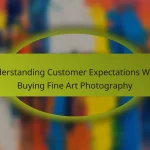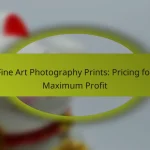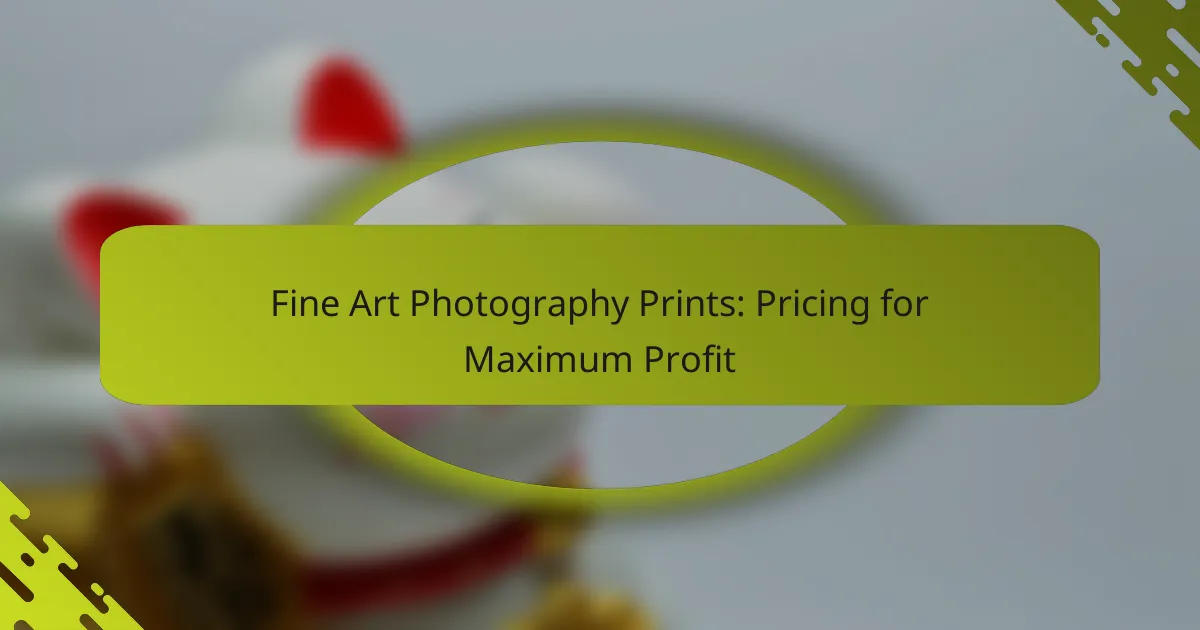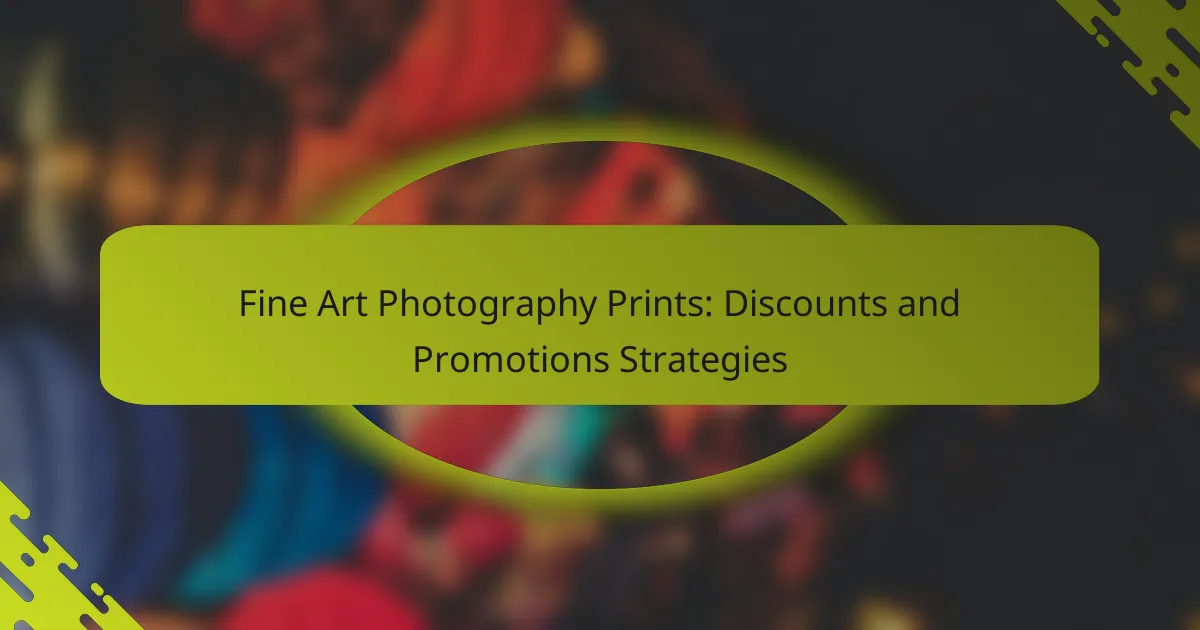Evaluating the market value of fine art photography prints involves examining several key factors, including demand, the artist’s reputation, and print rarity. By understanding these elements, along with historical sales data and print condition, collectors and artists can gain valuable insights into a print’s worth. Additionally, factors such as size, framing options, and material quality further influence pricing, making informed decision-making essential in the art market.
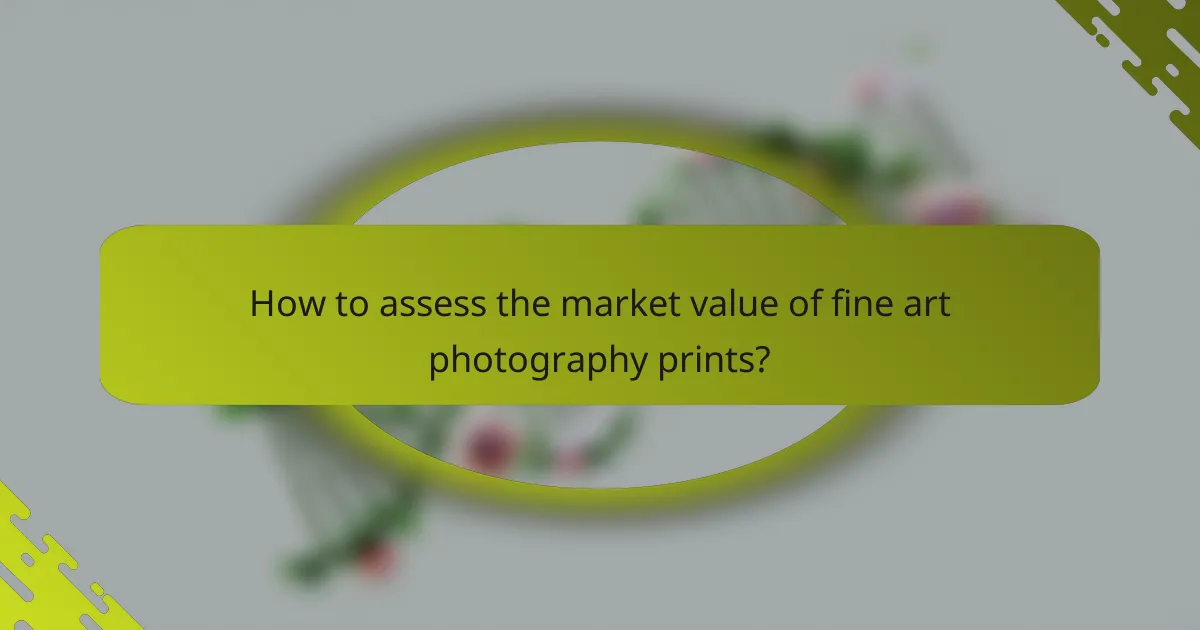
How to assess the market value of fine art photography prints?
To assess the market value of fine art photography prints, consider factors such as demand, the artist’s reputation, print rarity, historical sales data, and the condition of the prints. Evaluating these elements will provide a comprehensive understanding of a print’s worth in the art market.
Market demand analysis
Market demand analysis involves examining current trends in the art world and understanding what types of photography are sought after. Look for popular themes, styles, and subjects that collectors are currently interested in, as these can significantly influence a print’s value.
Additionally, consider the overall economic climate, as it can affect collectors’ willingness to invest in fine art. Engaging with galleries, auction houses, and online platforms can provide insights into what is currently selling and at what price points.
Artist reputation impact
The reputation of the artist plays a crucial role in determining the value of their fine art photography prints. Established artists with a strong following typically command higher prices due to their recognized talent and previous sales history.
Emerging artists may have lower initial prices, but their value can increase significantly if they gain recognition or awards. Researching an artist’s exhibitions, publications, and critical reviews can help gauge their standing in the art community.
Print rarity and edition size
Print rarity and edition size are key factors in assessing market value. Limited edition prints, especially those with a small number of copies, tend to be more valuable than open edition prints. The smaller the edition size, the more exclusive the print becomes.
For example, a print limited to 10 copies may be valued higher than one limited to 100. Always check the edition number and whether the print is signed by the artist, as these details can enhance its desirability and price.
Historical sales data
Analyzing historical sales data provides insight into how similar prints have performed in the market. Look for auction results, gallery sales, and online transactions to establish a baseline for pricing.
Tools like art market reports and databases can help track sales trends over time. Understanding the price fluctuations of specific artists or styles can inform your assessment of a print’s current market value.
Condition and preservation status
The condition and preservation status of fine art photography prints are critical to their value. Prints that are well-preserved, free from damage, and stored properly will typically fetch higher prices than those with visible wear or deterioration.
Consider factors such as fading, discoloration, and physical damage. If a print has been professionally framed and maintained, it may also enhance its market value. Always document the condition and any restoration efforts when evaluating a print.

What factors influence pricing of fine art photography prints?
The pricing of fine art photography prints is influenced by various factors including size, framing options, and the quality of materials used. Understanding these elements can help both artists and collectors assess value and make informed purchasing decisions.
Size and format variations
Size and format play a crucial role in determining the price of fine art photography prints. Larger prints often command higher prices due to the increased material costs and the impact of scale on visual presence. Common sizes range from small (around 8×10 inches) to large (over 40×60 inches), with prices typically increasing significantly as dimensions grow.
Additionally, the format of the print, such as landscape, portrait, or square, can affect desirability and market value. Limited edition prints in unconventional sizes may also attract collectors willing to pay a premium.
Framing and presentation options
Framing and presentation can significantly enhance the overall appeal and value of fine art photography prints. Custom framing, which includes options like matting and glass types, can add anywhere from 20% to 50% to the print’s price. A well-framed piece not only protects the artwork but also complements its aesthetic, making it more attractive to buyers.
Consideration should also be given to presentation methods, such as mounting on aluminum or acrylic, which can elevate the artwork’s visual impact and price. Artists should weigh the costs of these options against the potential increase in market value.
Material quality and printing techniques
The quality of materials and printing techniques used in creating fine art photography prints directly influence their market value. High-quality archival inks and papers can ensure longevity and vibrancy, making prints more desirable. Artists should aim for materials that meet industry standards for durability, such as acid-free papers and pigment-based inks.
Different printing techniques, such as giclée or traditional darkroom methods, also affect pricing. Giclée prints, known for their high resolution and color accuracy, tend to be more expensive than standard prints. Understanding these distinctions can help artists price their work appropriately and communicate value to potential buyers.
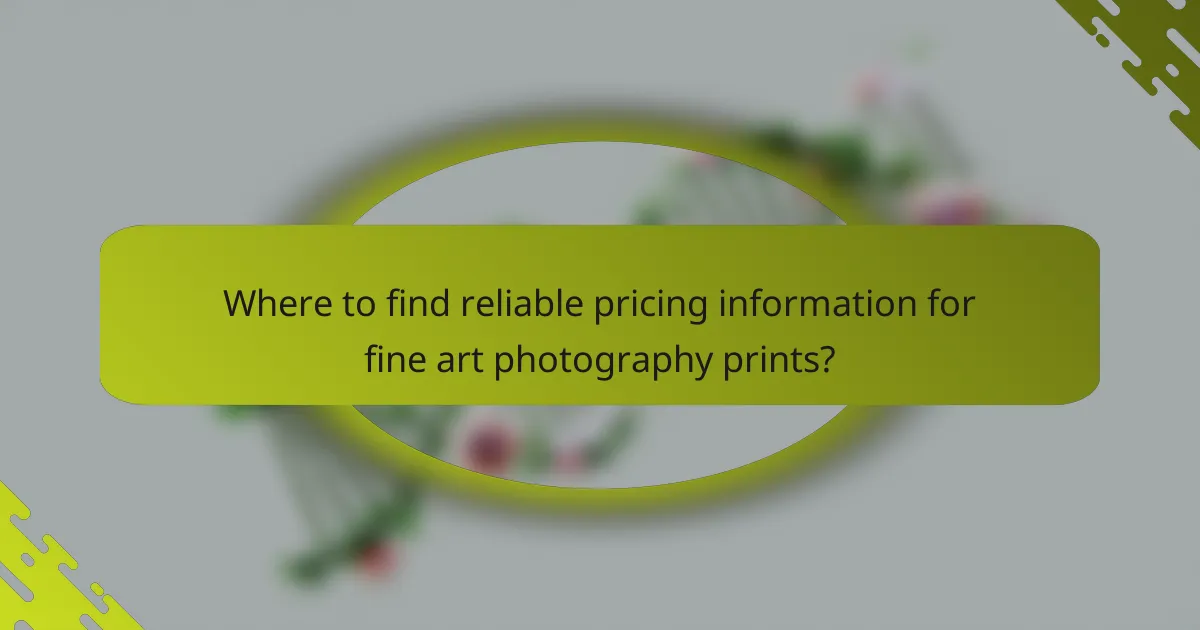
Where to find reliable pricing information for fine art photography prints?
Reliable pricing information for fine art photography prints can be found through various sources, including art galleries, online marketplaces, and auction house records. Each of these platforms offers unique insights into market trends and pricing standards.
Art galleries and exhibitions
Art galleries and exhibitions are excellent resources for evaluating the market value of fine art photography prints. They often showcase works from established and emerging photographers, providing a direct view of current pricing trends. Visiting galleries allows collectors to engage with art professionals who can offer insights into pricing based on factors like artist reputation and print quality.
When assessing prices at galleries, consider the location and prestige of the gallery, as these can significantly influence the value. For example, prints from a well-known gallery in a major city may command higher prices compared to those from smaller, local venues.
Online marketplaces like Artsy
Online marketplaces such as Artsy provide a convenient platform for comparing prices of fine art photography prints across various artists and styles. These platforms often feature a wide range of artworks, allowing buyers to see current listings and historical sales data. This information can help gauge the average market price for specific prints.
When using online marketplaces, filter searches by artist, medium, and price range to find comparable works. Keep an eye on the condition and provenance of the prints, as these factors can affect value significantly.
Auction house records
Auction house records are valuable for understanding the market value of fine art photography prints, as they provide historical sales data and insights into what collectors are willing to pay. Major auction houses like Sotheby’s and Christie’s often publish results from their sales, which can be accessed online.
Reviewing auction results can reveal trends in pricing, including how certain prints have appreciated or depreciated over time. Pay attention to the auction house’s reputation and the specific sale context, as these can impact the final sale price.
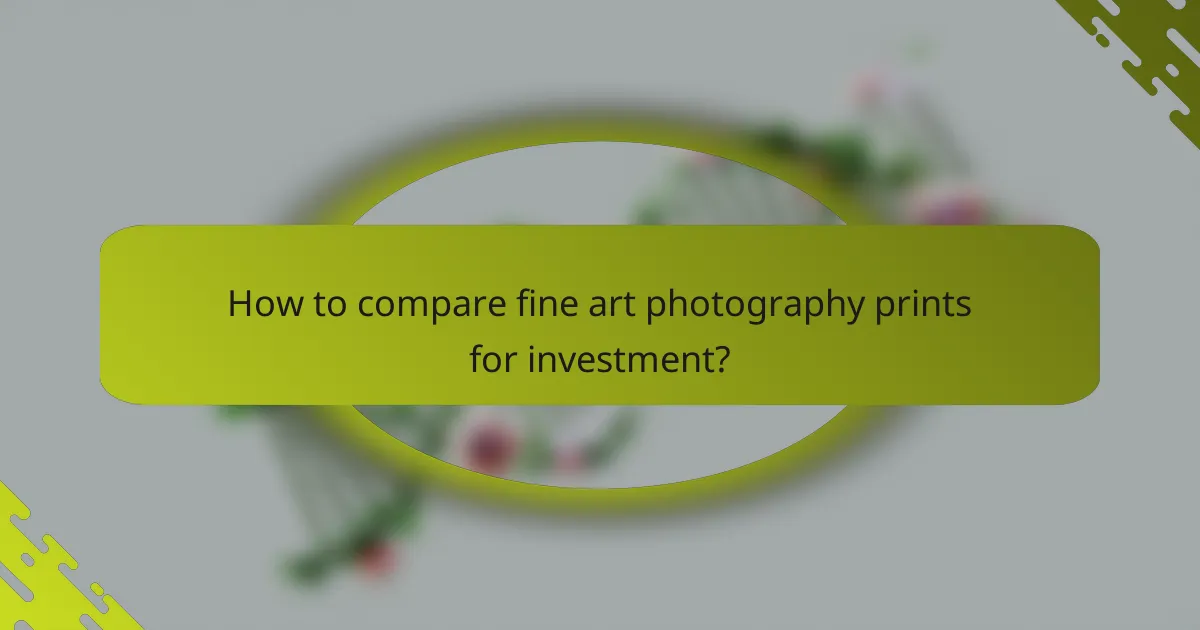
How to compare fine art photography prints for investment?
To compare fine art photography prints for investment, assess the artist’s reputation, market demand, and the print’s quality. Understanding these factors will help you determine the potential value and appreciation of the artwork over time.
Artist comparison metrics
When evaluating fine art photography prints, consider the artist’s background, exhibition history, and critical acclaim. Established artists with a strong portfolio typically command higher prices, while emerging artists may offer more affordable options with potential for growth.
Look for metrics such as auction results, gallery representation, and social media presence. These indicators can provide insight into the artist’s market position and future prospects.
Market trends analysis
Analyzing market trends involves observing shifts in demand for specific styles, themes, or artists. Pay attention to art fairs, online platforms, and auction houses to gauge current interests and pricing dynamics.
Consider the economic climate as well; during downturns, art prices may stabilize or decline, while a booming economy can lead to increased investment in fine art. Tracking these trends can help you make informed decisions.
Investment potential evaluation
To evaluate the investment potential of fine art photography prints, assess factors such as rarity, condition, and provenance. Limited editions or unique pieces often appreciate more than mass-produced works.
Additionally, consider the print’s market history and the artist’s trajectory. Investing in works by artists whose prices have consistently risen can yield better returns. Avoid pieces that lack documentation or have unclear ownership histories, as these can complicate future sales.
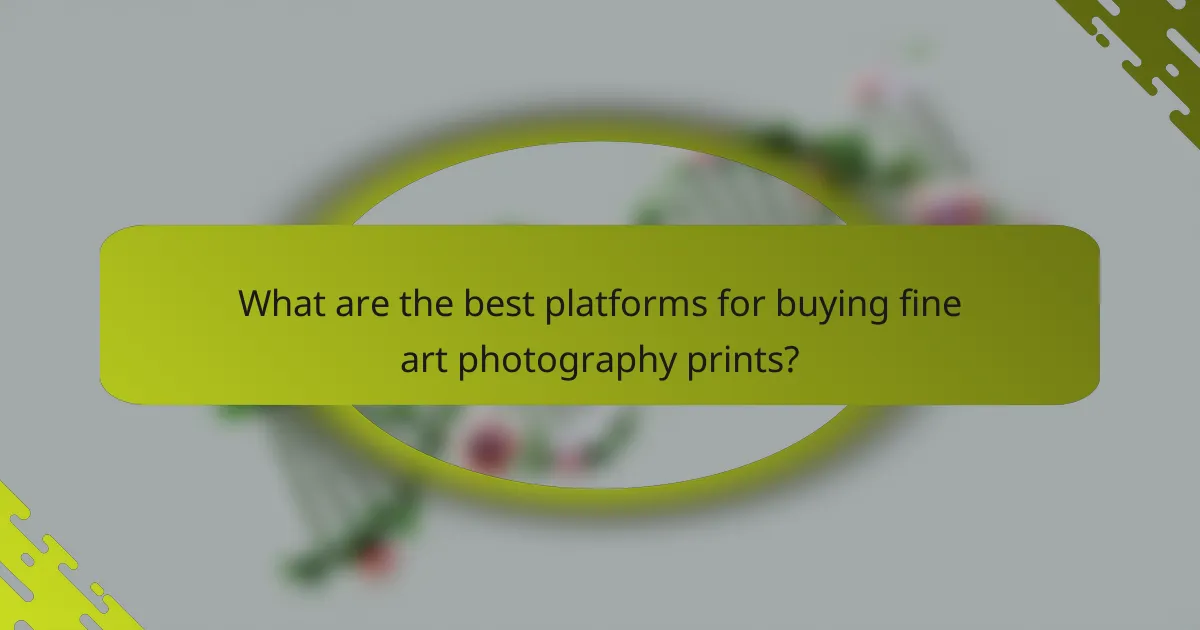
What are the best platforms for buying fine art photography prints?
Some of the best platforms for purchasing fine art photography prints include Saatchi Art, Artfinder, and 1stdibs. Each platform offers unique features and a diverse range of artworks, catering to different tastes and budgets.
Saatchi Art
Saatchi Art is a well-known online marketplace that specializes in contemporary art, including fine art photography prints. The platform features a wide selection of works from emerging and established artists, making it a great place to discover unique pieces.
When buying from Saatchi Art, consider the artist’s reputation and the print’s provenance. Prices can vary significantly, typically ranging from a few hundred to several thousand dollars, depending on the artist and the print’s size and edition.
Artfinder
Artfinder is another excellent platform for purchasing fine art photography prints, focusing on original artworks from independent artists. This marketplace allows buyers to connect directly with artists, fostering a more personal buying experience.
On Artfinder, you can find prints at various price points, often starting from lower ranges around $100 to several thousand dollars for limited editions. Look for artist profiles and reviews to ensure quality and authenticity before making a purchase.
1stdibs
1stdibs is a luxury marketplace that offers a curated selection of fine art photography prints alongside high-end antiques and design pieces. This platform is ideal for collectors looking for exclusive and rare artworks.
Prices on 1stdibs can be on the higher end, often starting in the low thousands and reaching tens of thousands for exceptional pieces. When shopping here, ensure to verify the seller’s credentials and the artwork’s authenticity, as the market can be competitive and premium-priced.
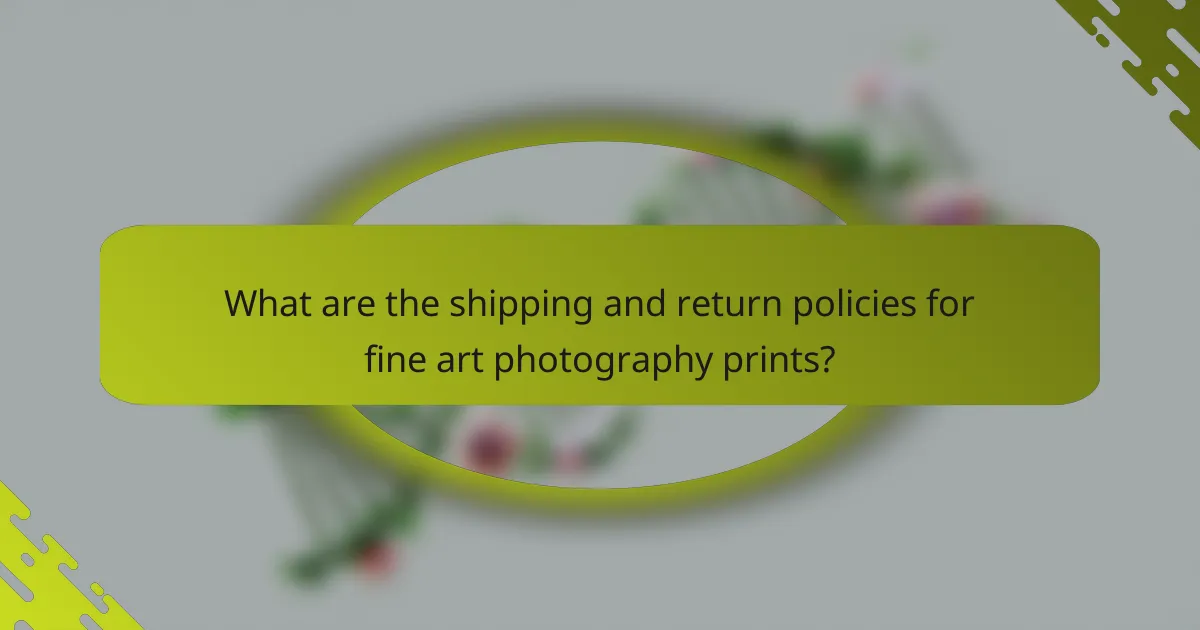
What are the shipping and return policies for fine art photography prints?
Shipping and return policies for fine art photography prints can vary significantly by seller. Generally, most sellers provide clear guidelines on shipping costs, delivery times, and return conditions to ensure customer satisfaction.
Shipping Policies
Shipping policies typically outline the methods of delivery, estimated shipping times, and costs associated with sending fine art photography prints. Many sellers offer standard and expedited shipping options, with delivery times ranging from a few days to a couple of weeks, depending on the destination.
It’s important to check if the seller provides tracking information and whether they ship internationally. Some may include free shipping for orders over a certain amount, while others may charge a flat rate or variable fees based on distance.
Return Policies
Return policies for fine art photography prints usually specify the conditions under which returns are accepted. Most sellers allow returns within a specified timeframe, often between 14 to 30 days, provided the artwork is in its original condition.
Some sellers may charge a restocking fee or require the buyer to cover return shipping costs. Always review the return policy before purchasing to avoid surprises, especially for high-value items.
Considerations for Buyers
When purchasing fine art photography prints, consider the seller’s shipping and return policies as part of your decision-making process. Look for sellers with clear, customer-friendly policies that offer flexibility in case the artwork does not meet your expectations.
Additionally, read customer reviews regarding shipping experiences and return processes to gauge reliability. This can help you avoid potential pitfalls and ensure a satisfactory purchasing experience.


